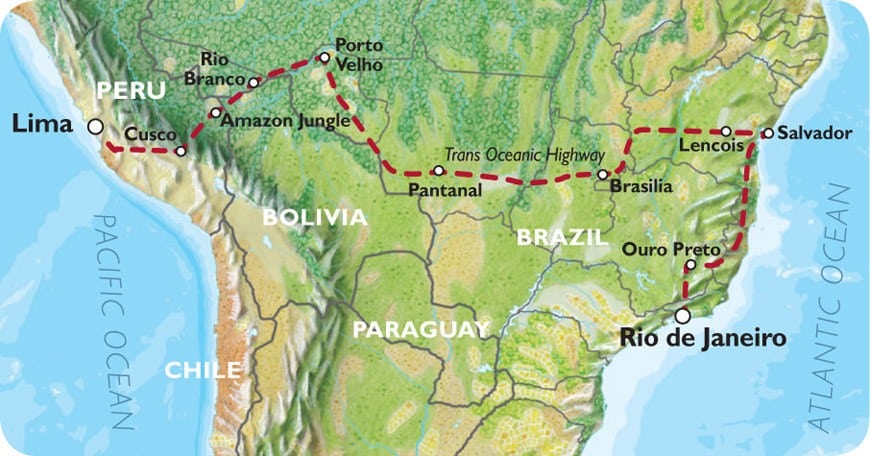In the heart of the Brazilian rainforest, the Trans Amazonian Highway, a 2,000-mile paved road bisects the lush Amazon. Intending to connect important cities and move commodities to urban markets, highway construction is an ongoing project that is causing great deforestation. MiLLENNiAL spoke with Rhett Butler, the founder of Mongabay, a website that publishes environmental news and statistics specifically about rainforest deforestation resulting from the construction of roads.
History and Intentions of the Trans Amazonian Highway
According to Butler, the Brazilian government began constructing the Trans-Amazonian Highway in the 1970’s. Inaugurated on September 27, 1972, this highway became the third longest highway in Brazil. It was an ambitious project that intended to link major port cities to one another in order to increase economic growth in the region. Along with the Trans-Amazonian Highway, the Trans-Oceanic Highway runs between Peru and Brazil serving the same purpose. Both of these highways have been ongoing projects that require continuous maintenance and updating.
The Problem of Deforestation
While both highways aim to help the economy by creating access to worldwide markets, there is a greater problem—deforestation, a problem Butler has been following for over 15 years. Deforestation, the clearance of forest for non-forest use, causes many problems according to Butler. “Considering that trees release a large amount of carbon into the atmosphere, less carbon, due to lack of trees, makes the forest more susceptible to fires. Deforestation disrupts the natural water cycle, especially the transpiration of gas and water causing less rainfall.
When there is a high rate of ecosystem clearance, droughts are much worse, animals’ homes are destroyed, and an overall threat to the area’s biodiversity is imminent,” Butler tells MiLLENNiAL. Brazil suffered a particularly high rate of deforestation until the early 2000’s. In 2004, the government put in place a conservation program that drastically decreased deforestation rates by 80 percent. Butler says, “Through engagement with those involved, people have been taught to respect and follow the laws. Also, a satellite system has been implemented to monitor the amount of land cleared on a monthly basis. The goal is less deforestation, more production.”
Pro-Roads versus Anti-Roads
There are mainly two groups of people that are supportive of the roads constructed in the Amazon, according to Butler. Speculators seeking to trade and sell their commodities in the most profitable and efficient way favor these highways. Also, ranchers and farmers support these roads because they acquire more land to grow their respective products when the trees are cleared. However, rainforest soil is particularly poor for farming and does not yield much agricultural production.
By contrast, there are groups of people against the construction of these massive highways. Naturally, scientists and environmentalists do not favor the highways because they disrupt the ecosystem and break biodiversity laws. And the government has been particularly supportive of conserving the rainforest with new zoning laws and by surrounding the highways with designated national parks to reign in deforestation.
Reversal of Highway Deforestation
Butler sees hope in reversing the environmental problems caused by the Trans-Amazonian Highway in programs and technology. “REDD+ is a program that gives values to the carbon stored in forests. They are called carbon credits, where landowners can earn up to $500 per section. An indigenous tribe is trying this out right now.” The program aims to give value to the ecosystem in order to preserve the existing forest.
With advancing technology, Butler says, “Anyone is a journalist.” New apps make it possible to report the clearance of land and analyze their findings. Drones are constantly collecting data to be processed for evaluation. Butler says, “They even have mobile phones that are attached to trees throughout the rainforest. These phones recognize trucks and chainsaw sounds and report them to local authorities to stop deforestation.”
Despite all of the destruction in the Amazon, there are other risks as well. Butler provides a simple example, “Medicinal products come from the Amazon. A heart drug and an anti-IV drug are made from plants found in the Amazon.” If deforestation continues surrounding these highways, drugs like these will no longer be available to the people that need them.
While the Trans-Amazonian Highway was intended to increase trade in South America by creating more efficient road routes, it has caused severe deforestation problems that Butler hopes to see reversed through programs and technology in the near future.




